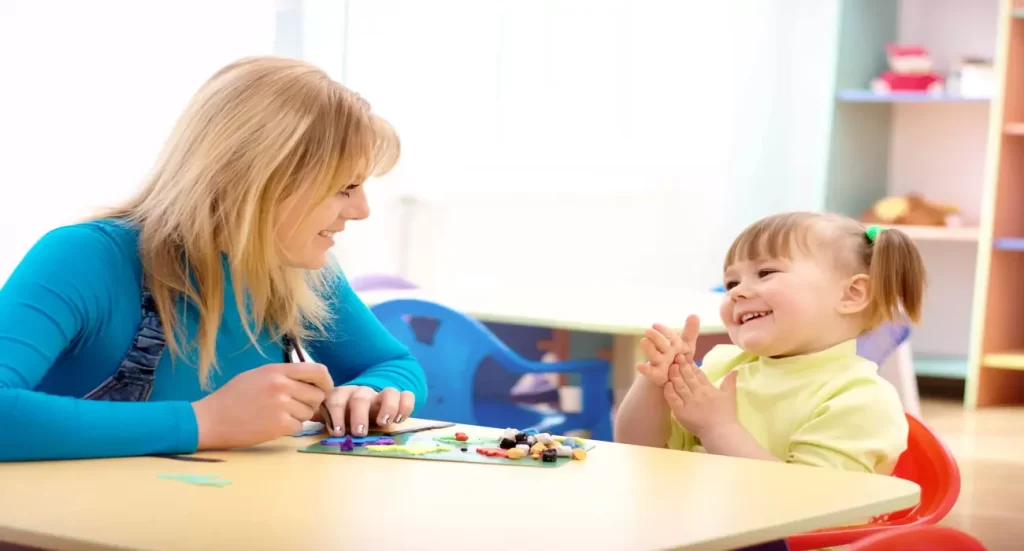What is Autism?
ASD is diagnosed with most obvious signs during 2-3 years of age, though some children develop normally until toddlerhood and later on begin to lose previously acquired skills and fail to attain new skills.
ASD is usually influenced by a combination of genetic and environmental factors. As it is a spectrum of disorders the range of disorders and signs and symptoms vary greatly in magnitude and character. Some autistic children are highly intelligent while others are severely challenged. Certain medical conditions like GI disorders, seizures, sleep disorders as well as mental health disorders like anxiety and depression also make way into their lives. Thus, early intervention is the key to obtain positive results in these children.
Early Signs of Detection
Parents and caregivers may notice the child with the following symptoms that may be quite alarming to them as the child behaves differently compared to other children of the same age. Here is a list of red flag signs that they may notice:
- Decreased eye contact
- Not responding to his/her name
- Prefers being lonely than cuddling and retreats to their own world
- Lacks facial expression
- Delayed speech or loss of previously acquired skill to speak in words and sentences
- Using repetitive words
- Has a regular pattern of behaviour and when intervened, gets really upset or aggressive
- Not pointing at objects to show interest
- Flapping their hands or spinning in circles or rocking their bodies
- Has difficulty in interpreting non-verbal cues like facial expressions
- Being passive or aggressive in the midst of a conversation
- Does not understand certain simple tasks or directions
- Has an abnormal tone while speaking and may even have a robot-like speech
- Unusual or intense reactions to certain stimuli like touch, smell, hear, taste or sight.
- Has odd movement patterns such as clumsiness, walking on toes or stiff or exaggerated body language.
- High or abnormal intensity on an object or fixates concentration on an object
Risk Factors
- Both genetics and environmental factors play an important role in the genesis of this disorder.
- Certain genetic factors or mutations, which mainly affect the brain development seem to have a bearing upon this disorder.
- Environmental factors like viral infections, pollution and medications/complications during pregnancy may also play a role in development of ASD.
- Boys are at a higher risk of developing ASD than girls.
- A positive family history is also a risk factor for developing ASD.
- ASD may also present with other conditions like fragile X syndrome(an inherited disorder causing intellectual problems), tuberous sclerosis(condition in which benign tumours develop in the brain) and Rett syndrome(genetic condition occurring almost exclusively in girls, which causes slowing of head growth, intellectual disability and loss of purposeful hand use).
- Older age of parents at the time of conceiving the child or extremely preterm babies also have a risk of developing ASD.
Diagnosis and Management of Autism
Certain diagnostic evaluation should be performed which involves an interview and play-based testing with the child done by a psychologist, developmental-behavioral pediatrician or child psychiatrist.
The following behaviour serves as the diagnostic criteria for autism:
- Not responding with a smile or happy expression by 6 months
- Not mimicking sounds or facial expressions by 9 months
- Not cooing by 12 months
- Not making gestures or pointing by 14 months
- Not being able to say single words by 16 months
- Not playing make-believe or pretend by 18 months
- Not being able to say two-word phrases by 24 months
- Losing already acquired language skills or social skills at any age
Having an autistic child is extremely challenging and can drain a person and family physically, emotionally and financially. Thus, it is essential to learn more about the disorder, understand the child’s behaviour and set up a routine accordingly and also make sure to understand the family’s emotional health.
Early intervention and diagnosis is helpful and can improve the child’s behaviour, skills and language. Though, the disorder is not completely curable, assistance can help the child to live more independently.
